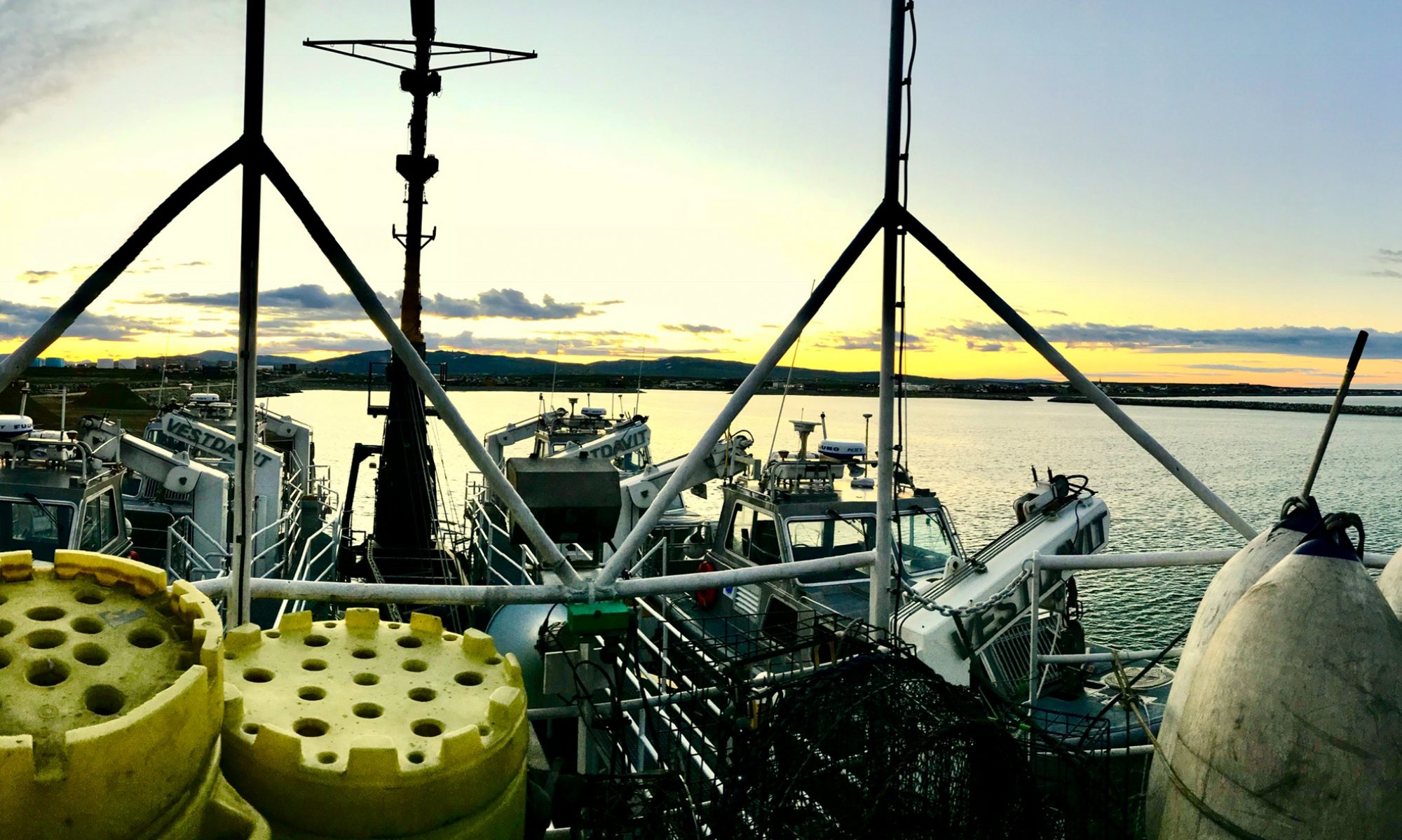NOAA Teacher at Sea
Roy Moffitt
Aboard USCGC Healy
August 7 – 25, 2018
Mission: Healy 1801 – Arctic Distributed Biological Observatory
Geographic Area: Arctic Ocean (Bering Sea, Chukchi Sea, Beaufort Sea)
Date: August 17-18, 2018
Current location/conditions:
Evening of August 17 – North East of Point Barrow, Alaska
Air temp 27F, sea depth 60m , surface sea water temp 30.6F
Viewing Sea Ice on an Icebreaker

The USCGS Healy was designed to break through ice and it has had that opportunity to do so on this trip. Breaking into the ice is a first time experience for myself and for many of the science crew and USCG crew who are pictured above. It’s an amazing experience.
We are now entering the edge of the polar ice cap in the Beaufort Sea. The polar ice cap is an area of the world around the North Pole where the sea surface stays mostly frozen year round. The sun angle here is low in the summer with endless nights in the winter. This spring and summer, the ice off the shore of Barrow, Alaska was thicker than normal. Thicker ice is multi-year ice where the freezing has exceeded the melting over successive years causing the ice to progressively thicken. This thicker ice was not formed here; it drifted from farther north where it broke off the pack ice and traveled south to where we are now.

Pack ice is primarily a continuous piece of ice with little open water. Pictured here and above with the Healy is drift ice. The drift ice is broken up into large pieces due to warming seasonal temperatures and rough seas. The drift ice in the second image has reconnected with a thin clear layer of ice made possible by the calm seas and cold temperatures that we experienced on August 17th.

The ice is not normally flat. Wind and internal forces cause the ice to collide and create ridges both above and below the water line. In the winter, the snow that falls can also drift into piles. The image below shows where two pieces of ice once collided on a small scale. When pack ice builds over time these processes create a variable landscape with protruding ice ridges. When ice breaks off from the pack ice the thickest ice will take the longest to melt and will eventually float alone. These pieces of ice are called “growlers”.
These have been amazing to observe popping up along the seascape. The first one I saw had birds flying overhead in the distance. The birds were using the using the growler as a place to land. To me it looked like a big white whale. Another piece looked like a sea dragon. See these growlers in the images below.
Today’s Wildlife Sightings

Above is an image of a bearded seal seen on the morning of August 17. The water was very calm and the seal popped up right in the front of the bow of the ship. Later in the evening I saw one sitting on a piece of drift ice. Bearded seals like to eat clams and fish and are a favorite prey of the polar bear. Polar bears also live in the area we are sailing through now. Both walrus and seals use ice for resting places. In the spring, the bearded seal will use drift ice as a place to give birth to their young (called pups). Polar bears will then hunt on the ice for its prey.
Now and Looking forward
As Healy sails in this area with a daily satellite image showing ice coverage, it’s easy to forget what a dangerous place the Arctic can be for ships. When ice first appeared during this trip, we were north of Wainwright, Alaska–a location not far from a historic whaling disaster in 1871. During August of 1871, the wind changed direction and blew pack ice towards the shore trapping 33 whaling ships. All of the ships had to be abandoned and most were eventually crushed by the ice. On the morning of August 17, 2018, we were also sailing between ice and land. There was an eerie calm sea with both fog and some larger pieces of ice. At times the sun, ice, and fog created an illusion that appeared as if we could sail off the end of the world. Below are some pictures that I thought captured the eerie calm Arctic of August 17th.
Picture below: Clouds on a calm sea off Healy‘s bow as we travel north. I call this picture “going off the edge of the world”.

Picture below: Glaucous gull on the edge of a fog bow. A rainbow formed from a thin fog layer of suspended water droplets at the surface. The calm Arctic Ocean feels like a mystical place.
















































